Driving:
The overall trip, not including driving about 50 miles per day inside of Yellowstone Park was 2,278 miles, (37 hours).
Day 1:
- Home to Chaimberlain SD (we actually stopped at the Corn Palace in Mitchell, SD just for fun)
- 6 h 57 min (471 mi)
- We stayed at the AmericInn by Wyndham Chamberlain Conference Center, 1981 E King St, Chamberlain, SD 57325
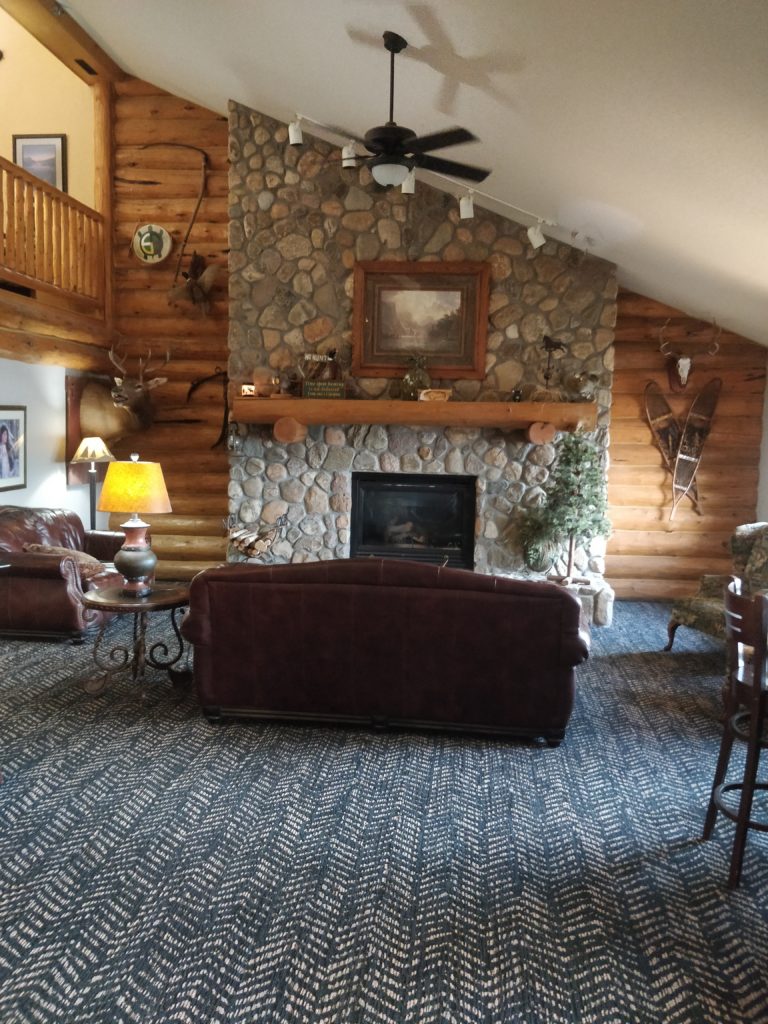
Day 2:
- Chaimberlain SD to Gillette, WY, stopping at Wall Drug, Mt. Rushmore, and Crazy Horse Memorial
- 2 h 12 min (155 mi) to Wall Drug Store, 510 Main St, Wall, SD 57790
- 1 h 21 min (76.4 mi) to Mount Rushmore National Memorial, 13000 SD-244, Keystone, SD 57751
- 36 min (17.8 mi) to Crazy Horse Memorial, Crazy Horse, SD 57730
- 2 h 9 min (121 mi) to Gillette, WY
- We stayed at the Comfort Inn and Suites in Gillette, WY
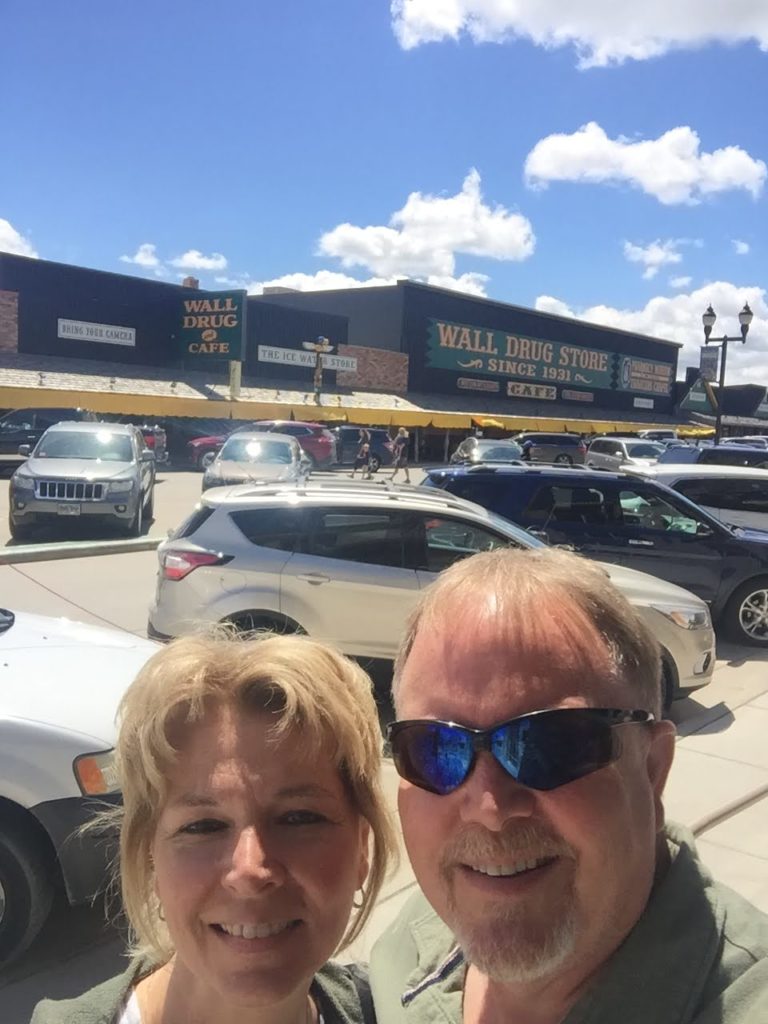
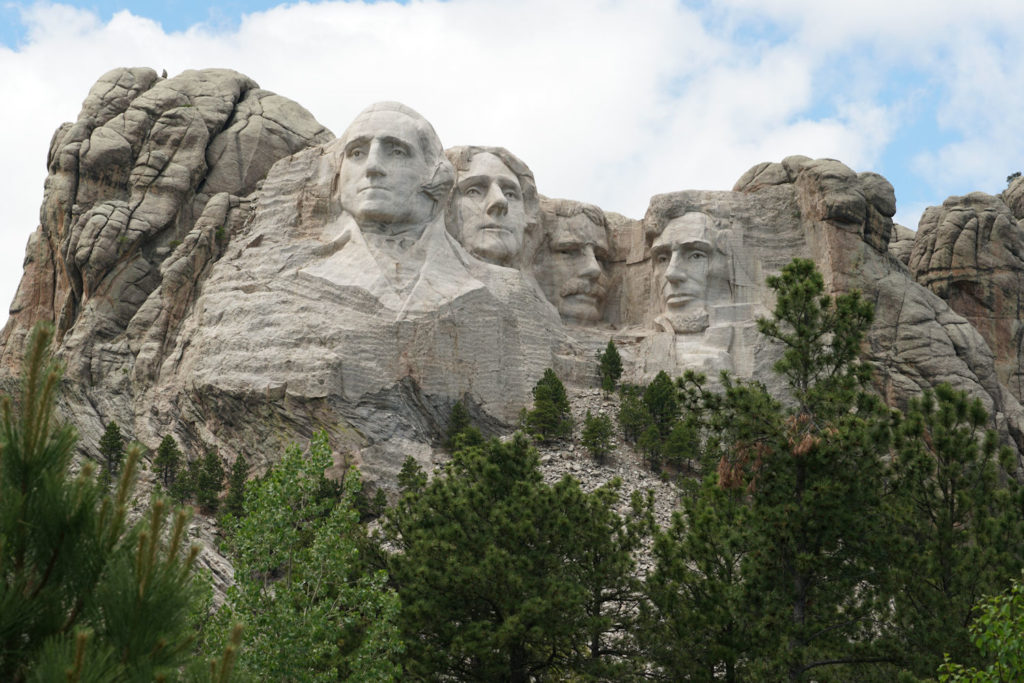
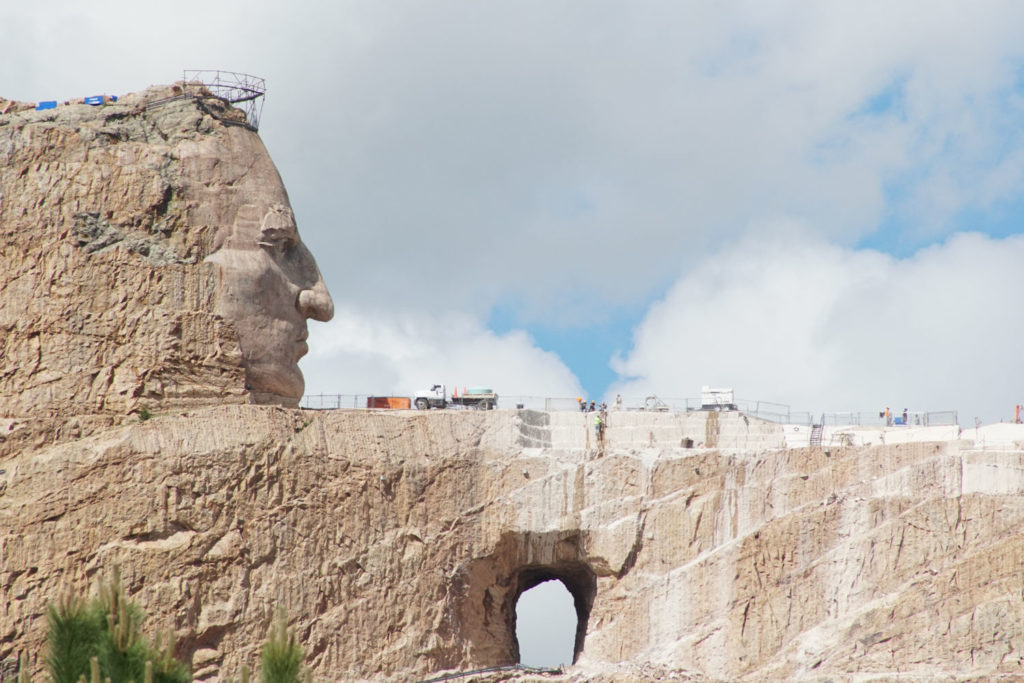
Day 3:
- Gillette, WY to Pahaska Tepee, WY
- 5 h 2 min (286 mi) to Pahaska Tepee Wyoming 82414
- Pahaska Tepee is about 2 miles outside the East Entrance to Yellowstone and it is the site of Buffalo Bill Cody’s old hunting lodge.
- We took the drive into Fishing Bridge. The drive between the East Entrance and Fishing Bridge (around the lake) is where you can see Grizzly Bears.
- We stayed in a cabin at Pahaska Tepee for about $175 / night.
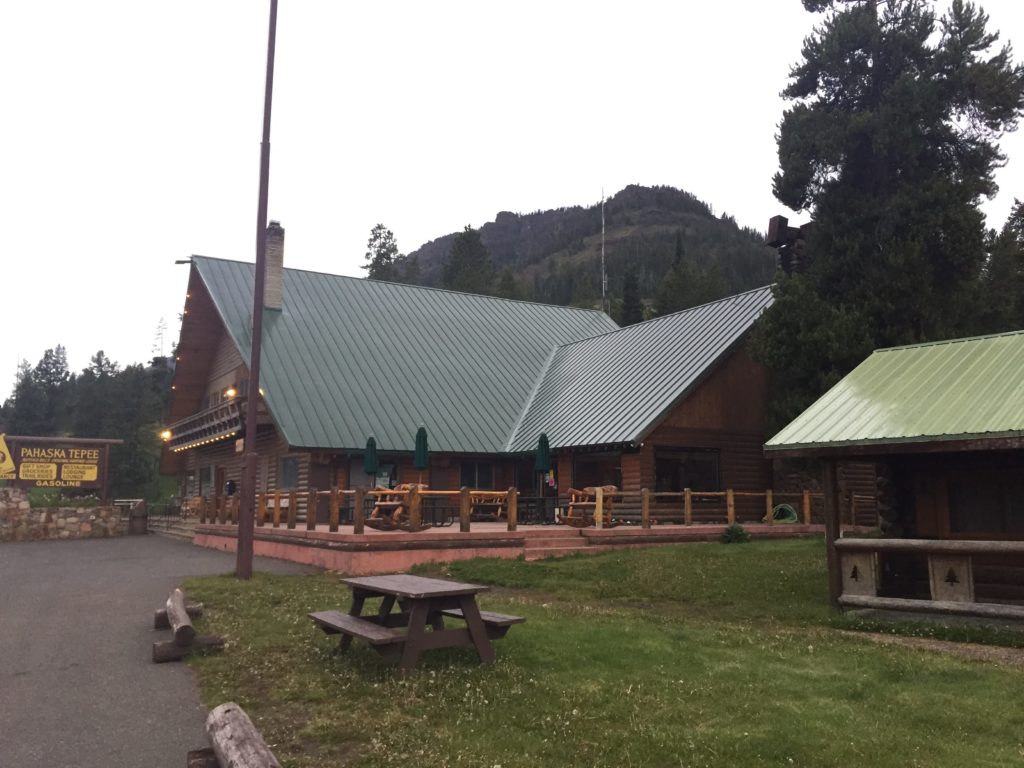
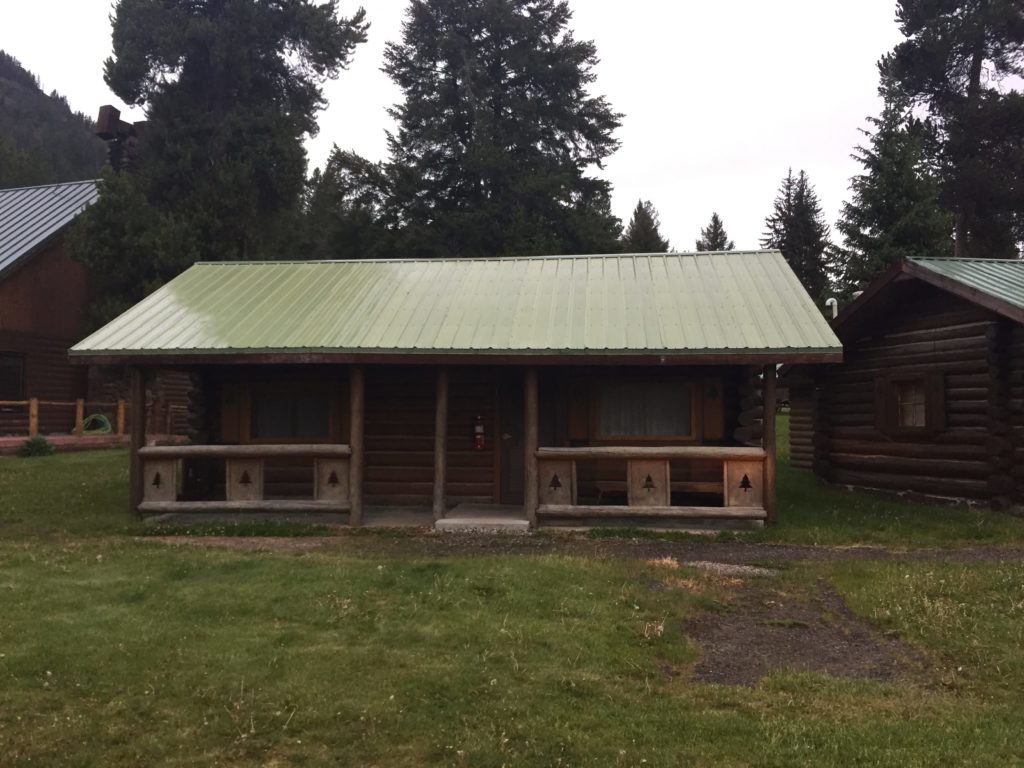
Day 4:
- We went back into the park and saw the mud pots in the Norris Geyser Basin and we made a stop in Canyon Village. We also visited the Grand Canyon of the Yellowstone and the Lower Falls.

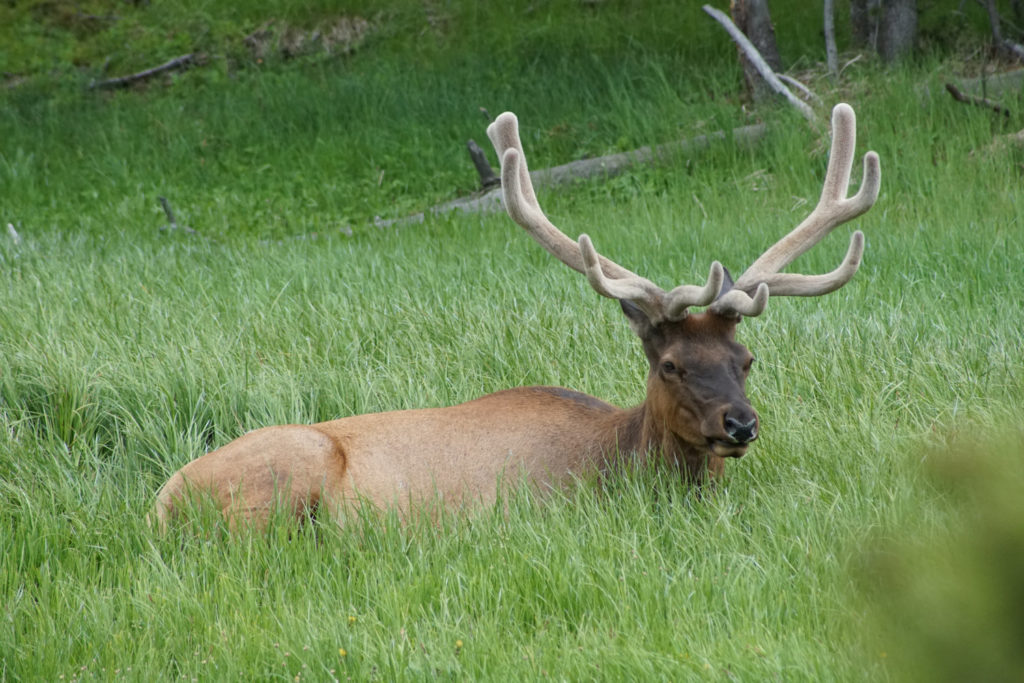
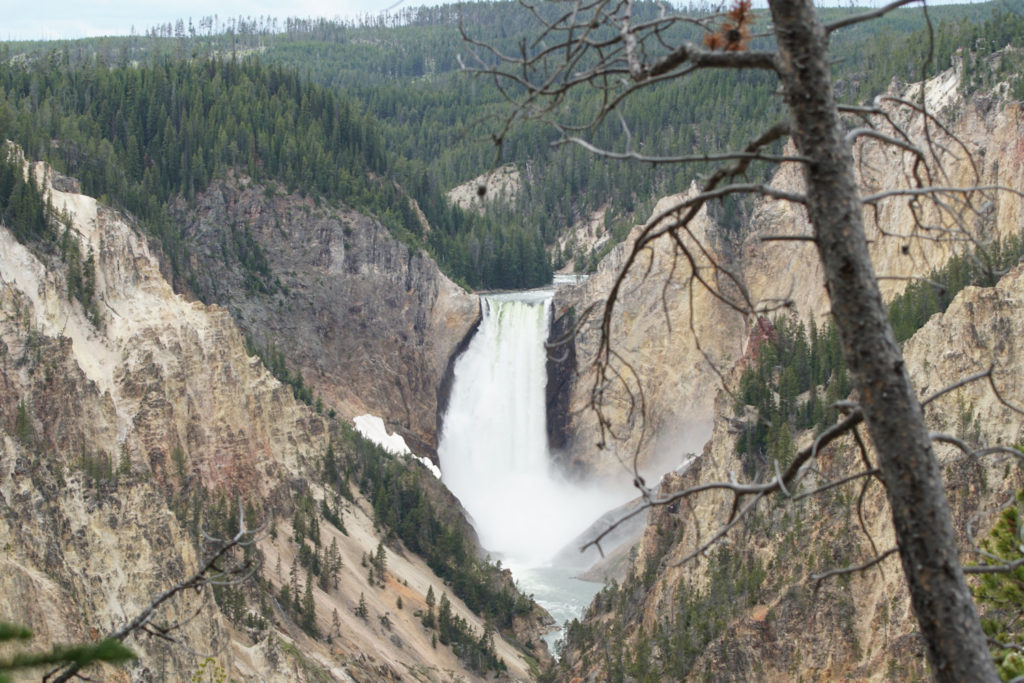
Day 5:
- We moved form Pahaska Tepee to Old Faithful Lodge Cabins.
- We left early in the morning and went back into Cody, WY to get dry ice and head to the Northeastern Entrance and the Lamar Valley.
- You need to go out early in the morning to see wildlife. By about 10:00am, most of the action is over.
- We couldn’t go through the park because the road was closed between Canyon Village and Tower Roosevelt for all of 2020.
- The terrain between Cook City and Silver Gate and the Northeastern Entrance is very rocky and steep.
- We were told the best chance to see bighorn sheep is just inside the Northeastern Entrance in Soda Butte. We missed them on our way into the park.
- We saw a black bear and some moose just inside the Northeastern Entrance.
- The Larmar Valley is the number one place to see a lot of varied wildlife (#2 is probably the Hayden Valley). Antelope, Bison, Wolves, etc. We actually saw a wolf eating a bison he killed.
- From the Lamar Valley, we went through Tower Roosevelt to Mammoth. It was raining so we went out the North Entrance to grab cell service and get a picture of the original Yellowstone Entry Arch in Gardiner, MT.
- There are tons of elk around Mammoth and Gardiner.
- We came back and toured the Mammoth Hot Springs.
- From there we went south through the Norris Geyser Basin to Madison Junction to Old Faithful.
- We stayed in the Old Faithful Lodge Cabins. The rooms in the lodge were not open due to the pandemic. The cabins with shared bathrooms were also closed.
- The only cabins that were open had private bathrooms. The cabins are tiny but adequate with no air conditioning and cost about $175+ per night. It was high 30s at night and low 80s during the day so the cabin got warm in the afternoon and we had to run the heater at night.
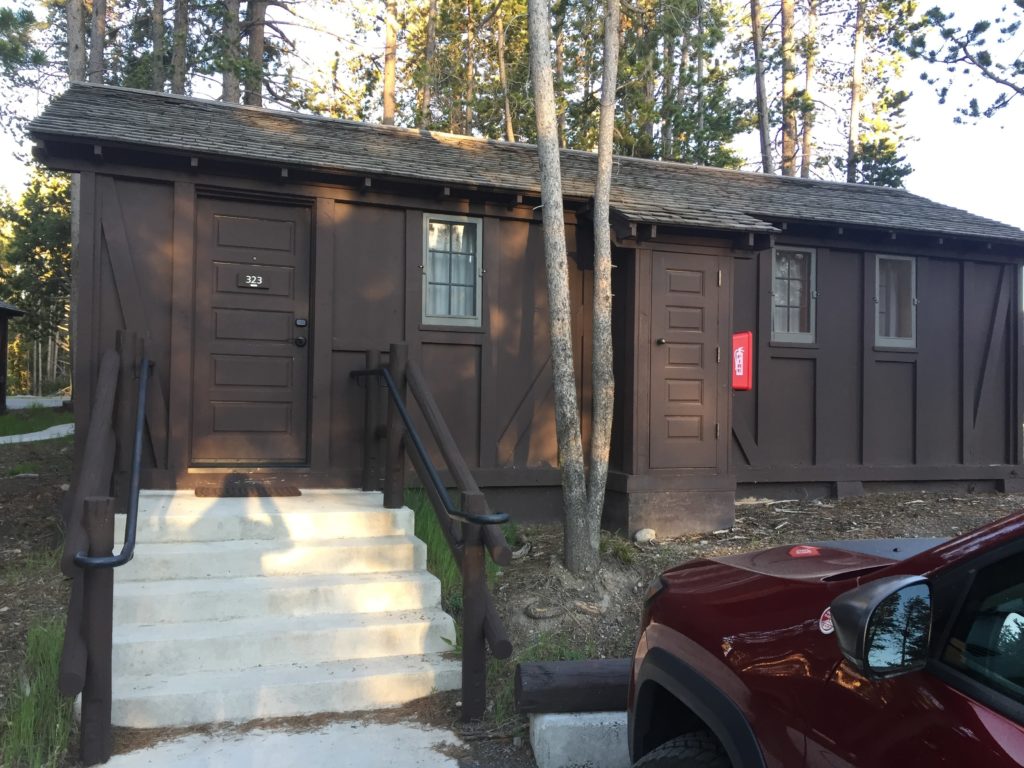
Day 6-8:
- We used Old Faithful as a base and toured the park from there. We have heard that the largest number of geysers and hotpots in the world are in the 16 mile route between Old Faithful and Madison Junction. Frommer’s has a cool article about this area, here.
- We watched Old Faithful errupt about every night.
- There are a lot of hiking trails in the Old Faithful area. We also hiked to the overlook (not easy) to watch it errupt.
- We traveled to West Yellowstone, MT to grab cell service and a McDonald’s Iced Tea.
- We visited the bottom half of the Grand Loop including West Thumb, Grant Village and Lake Village.
- You need to take Firehole Canyon Drive to see the falls and other scenery.
- Firehole Lake Drive is also a cool place to see some hot pots.
- We went to the Grand Prismatic Spring. You have to do this first thing in the morning or your won’t be able to park anywhere near it. The problem with viewing hotsprings in the morning is there is a lot of steam that blocks the view. By the time the steam burns off, all the parking places for 1/2 a mile are taken. We hiked to the Grand Prismatic Spring Overlook. The Grand Prismatic looks much cooler from above. We couldn’t go beyond the overlook because a bear had attacked a woman in that area the day before.
Day 9:
- We traveled out of the South Entrance to the Park and into Grand Teton National Park. We didn’t have to pay to enter the Tetons from the North. If you enter from the South, you may have to pay to get into Grand Teton National Park and then again in Yellowstone National Park. We spent the night in Rawlins, WY on the way to Denver then back home.
We love yellowstone but it was our second chioce for 2020:
- We were supposed to be in Africa this summer but the trip got postponed due to the pandemic. The climate is probably similar so we used this trip to test out our gear.
Official Yellowstone Website:
The official site has good information and is worth a look.
Navigating in Yellowstone Park:
- The speed limit in the park is 45 mph unless otherwise posted. Most of the time, traffic goes slower than that. You cannot get anywhere quickly. You have to allow time for Bear Jams, Elk Jams, Bison Jams, and construction.
- The main road in Yellowstone is called the Grand Loop. It is basically a figure 8 with spurs that go out to each entrance. You could possibly drive the entire loop in one long day without stopping to view any attractions.
- There are 5 entrances, 2 in Wyoming and 3 in Montana. We made it a point to visit each entrance just to say we did.
Why we like to stay in the park:
- Early morning and late evening are the best times to see wildlife in the park. If it takes more time to get into the park, you might miss a lot of the action.
- We prefer to stay in cabins instead of dragging a camper all the way to the park.
- You could stay in Gardiner, MT , West Yellowstone, or Pahaska Tepee and get into the park fairly quickly (2 to 10 miles). If you stay anywhere else, it will take you an hour to get to the park entrance.
- Old Faithful is centrally located between most of the attractions so we stayed there for 4 nights of our trip.
Reservations:
- Lodging and campground reservations opened on June 1, 2020 for the 2021 year.
- You can go online to yellowstonenationalparklodges.com to see pricing and availability but not all availability is reflected. You should call to see if there are additional options. Xanterra is the third party than handles all reservations for Yellowstone National Park and the Grand Tetons.
- You can reserve several nights and pay for the first night as a deposit. You change the duration of your stay at a later time, without penalty.
Eating in the park:
- There is fairly limited selection of food in the park and if you eat at a restaurant, it takes time. During the pandemic, almost everything was grab-and-go and I cannot eat Nathan’s Hot Dogs for every meal.
- The only place you can cook are in picnic areas. You can use propane grills in the picnic areas.
- Cooking and reheating food in the cabins is prohibited but I took a small sous vide setup along and assumed that didn’t count.
- We had pretty good luck taking 2 coolers, one for frozen food and one for refrigerated food. We bought dry ice along the way to put in the freezer cooler. You can find out where to buy it at https://penguindryice.com/. Our dry ice lasted about 4 days and had to be purchased outside the park.
- Regular ice is available at all the General Stores and service stations in Yellowstone.
Bathrooms:
- Most bathrooms can be found in Visitors Centers. There are also pit toilets in each picnic area.
- There are great restrooms attached to the outside of the gas stations at Fishing Bridge and Mammoth that most people don’t even know about.
Cell Service (AT&T):
- No service in most of Yellowstone Park except:
- Tower Roosevelt
- Old Faithful (after 10pm and before 7am)
- Cellular data is pretty slow inside the park.
- No cell service in most of the Tetons
- We got cell Service in most of the towns around the park, Cody, Gardiner, West Yellowstone.
Offline Maps are a must since there is no cell service:
- Download offline Google maps for the entire area to your phone before you leave home.
- Gaia GPS Hiking and Offroad Maps are excellent for hiking and navigating around the geyser basins. I paid a few bucks to get these maps on my phone.
- There is also a great hiking guide here.
The best time of year to go:
- If you want to see more than Bison and Elk, the best time of year to go to the park is just after it opens while there is still snow in the higher elevations and the animals are still in the park. Later in the year, they move higher and further away from the people.
- There are roads that don’t open until early June so you need to wait until early June to go. July and August are the busiest months in the park.
Bear Spray:
- You have to buy it there or in a surrounding city because Amazon won’t ship it.
- The rangers will tell you that everyone should carry it. We didn’t.
- It seems, as long as you are in a group of 3 or more on main trails (not backcountry) and make some noise, the bears will pretty much leave you alone.
Park Passes:
- The easest thing to do is buy your pass at the gate. There isn’t a real advantage to buying it ahead of time.
- There weren’t any pre-paid pass gates so we had to wait behind all the people who were purchasing day passes.
- We bought the America the Beautiful pass which allows access to all the national parks in the country for a year. It cost $80. A 7 day park pass is about $30
- We had to show a driver’s license and the pass (signature side out) each time we entered the park.
Hotels:
- We are not picky as long as they are clean.
- After this trip, I decided I would never stay in a hotel in a city that was too small to have a WalMart. If the town is too small to have a WalMart, they have limited dining and shopping options.
Binoculars:
- We bought decent binoculars for our trip to Africa and took them to Yellowstone this trip. I don’t know how we ever went without them before. Dianne bought hers at Cabelas for about $130 and I ordered some from China with the same specifications for about $60. Dianne’s are the Nikon Prostaff 3s 10 x 42mm
Camera Stuff:
- This is always a tradeoff between image quality and portability.
- You will see people with 8lb. lenses and tripods. 8lbs. is 1/4 of my gear weight limit.
- I have a Sony A6300 APS-C mirrorless camera that takes pretty good pictures and video.
- I used a 70 – 300mm 4.5-5.6 zoom lens and an 18-135 3.5-5.6 zoom lens.
- I spent a lot of time switching lenses, so much that I have seriously considered buying a second camera body for Africa 2021.
- The 300mm zoom on an APS-C camera is the equivalent of a 400mm lens on a full-frame camera and it is about as long a lens as I can use, handheld or wedged against a tree.
